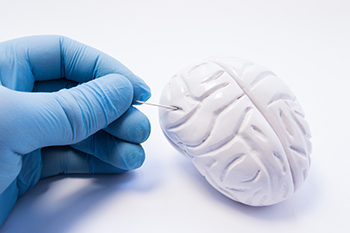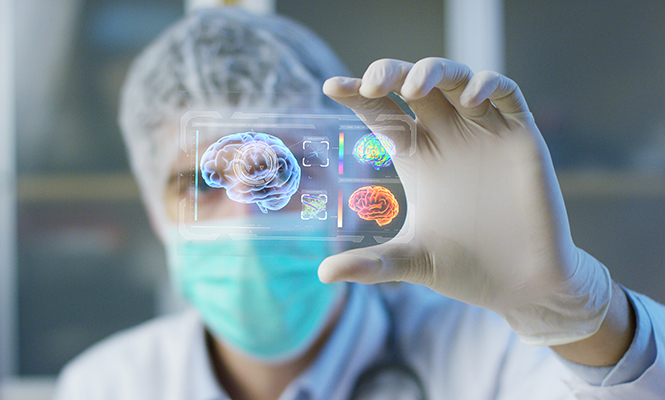“It’s tough to make predictions, especially about the future”.
– Yogi Berra
Envisioning the future of a field as broad and complex as neurosurgery is quite a daunting task; anticipating the educational and training needs of the next generations of neurosurgeons is even more challenging. Key lessons should be learned from past attempts at predicting the future. In 1898, Jean-Marc Côté was commissioned to artistically depict the future state of world affairs in the year 2000. A series of 87 vignettes, En L’An 2000, resulted in which he depicted images of innovative devices like helicopters, submarines and airplanes with foldable wings. Those visions were quite prescient, remarkable and many have become part of daily life. In contrast, careful scrutiny of his art demonstrates that while he accurately imagined future technological revolutions, the creations were in many ways frozen in the last part of the 19th century. No progress was imagined in architecture or people’s clothes. While imagination was not limited, there remained critical constraints. This is incredibly important as we try to envision what our specialty will look like and how training will change. While envisioning major technological breakthroughs is relatively easy, understanding they will not occur in isolation is crucial.
Key External Elements
- The state of the world geo-politics
- The state of the economy in the U.S. and the developed world
- The impact of global conflicts
- Demographics and physical attributes, both of physicians and patients
Looking Back
It is incredible to think back about the meteoric genesis of our discipline after specialty recognition in 1885 by Victor Horsley. At that time, neurosurgery was extremely limited to problems like trigeminal neuralgia and cortical brain tumors, resected under the guidance of neurologists who selected not only the patient but also the incision site. The initiative and imagination of Harvey Cushing, working closely with his trusted pathologist Louise Eisenhardt, greatly expanded our field. Many of the contributions were in the technological area, such as the invention of the Bovie cautery, automatic operating room suction and anesthetic monitoring that enabled spine and brain conditions to be treated in a safe and efficient way. The introduction of magnification and the operative microscope by Theodore Kurze in 1957 allowed neurosurgeons to precisely see anatomic structures and to do so in a deep and narrow corridor with brilliant illumination. Initially, learning how to use these skills fell to neurosurgeons already trained in the “before” period. Eventually, each of these technological innovations also required a new set of skills that had to be learned during residency training. Consequently, each technological advance prolonged the duration of training. In light of Accreditation Council of Graduate Medical Education (ACGME) duty hour restrictions and with an already lengthy neurosurgical training curriculum, it will be a challenge to transmit these new bodies of knowledge and technologies to trainees in the same way that has been done historically.
Looking Forward
Clearly, limiting the education of our residents to the classical Halstedian model is no longer viable. The ACGME milestones project was created and is currently implemented in U.S. academic programs as one element of the solution to that problem. The milestones are meant to be selective biopsies of knowledge that mature along the pathway to independent practice, and aim to make sure that contemporary patient needs are addressed in an ongoing and fluid way through the evolution of the Milestones 2.0 and beyond.
Today and Beyond

Technology
It is now obvious that for our field to survive and thrive, we need to adopt emerging technology early.
- We need to learn from other industries, including the military, about new tools being developed and imagine how they could impact neurological disease.
- We must avoid mistakes made by many other disciplines that abdicate new technological developments to other specialties, rather than embrace them in evolving care.
The endovascular revolution is but one example of neurosurgery’s appropriate stewardship of an emerging treatment paradigm for patients. The development of the next generation of stereoscopic endoscopes, exoscopes and augmented reality devices with cranial and spinal applications is highly reminiscent of the introduction of the surgical microscope in the late 1950s. Future training must encourage adoption and require proficiency with these new devices, both to optimize aptitude and to enable residents to advance these technologies.
Basic Science
Basic Science innovations will dramatically influence care and training, the following are just a few notable examples:
- Brain and spine tumor treatments are changing rapidly with the advent of personalized, genetically and immunohistologically-based therapies.
- Stem cell implementation in spinal degenerative conditions and in neurodegenerative cognitive disease should revolutionalize interventions for spinal disorders.
- Understanding the remarkable intersection of the brain and the gut may transform many areas of neurosurgical care, including the treatment of patients with Traumatic Brain Injury (TBI).
As neurosurgeons are not typically trained in the basic sciences, there is risk of losing aspects of our practice to other specialties if we do not evolve to lead in new domains. Resident training must adapt accordingly.
Artificial intelligence and machine learning programs that efficiently mine multi-center and national clinical databases will empower neurosurgery in a way that cannot be attained using conventional statistics. As we have all experienced, human biology, anatomy and behavior are infinitely complex. In spite of massive amounts of clinical data including prospective randomized trials, there remains a lack of consensus about best practice in most areas of neuroscience. Meta-analysis rarely provides consensus decisions. Data from a large number of trials is difficult to group and analyze effectively. Machine learning will transform our clinical decision-making. It is also easy to envision the role of virtual reality in accelerating learning in the future.
Tomorrow’s Promise
Neurosurgery will be successful in honoring our social contract going forward only with a continuous quest towards innovation and problem solving. Our specialty must open our minds to developments in other scientific and medical fields as well as in different industries. With that mindset, we will be effective at expanding our skills and the skills of our future trainees, allowing our practice to continue to reflect the values of excellence and integrity that we have had since the genesis of neurological surgery.
[aans_authors]








